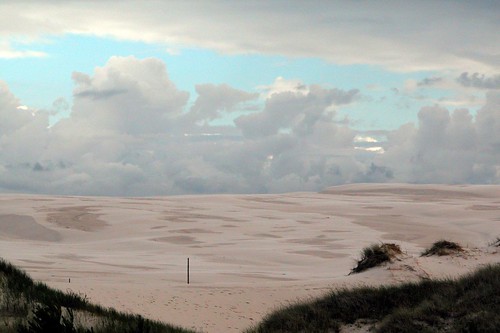Why should you visit Kaszuby? Posted by Kasia on Aug 23, 2014 in Places to visit
Kaszuby Province lies in the northern edge of Poland. It spreads over south and west from the sea port of Gdańsk on the Baltic Sea and covers an extensive area of varying landscapes – from sand dunes to forests and hills. The most important feature of the Kaszuby region is the thousands of lakes that abound the area. It is because of these lakes it is also called the Kashubian Lakeland (Jeziora Kaszubskie). The region promises an exciting holiday in the sun and the sea combined with heritage sites and folk culture.
Marked by a strong ethnic culture, the Kaszuby region has been the heart of fishing and farming for long time. The natives speak their own language . The place is also famous for its folk culture and porcelain & pottery manufacturing. The Kaszuby Province is marked by small villages and the many lakes around which tourism has built up. They say “wherever you throw a stone in Kashubia, it will land in water”.
The Kaszuby or the Kashubian Lakelands with its varied landscape is often called ‘the world in a pill’. You must visit this part of Poland for a unique experience.
Few places worth visiting:
Kashubian Ethnographic Park: At Wdzydze Kiszewskie is an outdoor museum of traditional Kaszubian buildings, founded in 1906. The buildings were collected from the region, lovingly restored and furnished and set up as a folk village. Perhaps some of them were abandoned by the Kaszubs as they left to look for a new life overseas. In the area of 22 hectares there are approximately 40 buildings: 7 farmyards, 2 manor houses, 5 cottages, 4 nobleman houses, a village school with a classroom, a church, a sawmill, a windmill and a smithy.
Parowozownia (steam locomotive museum) at Kościerzyna: The open air railway museum at Kościerzyna displays a huge collection of steam locomotives and railway stock, dating back to 1929, and documents the development of the railways in the region. You are free to climb onto these huge engines and even ride on a working steam train!
Sand dunes at Łeba: Nearby is the Smołdzino and Słowinski National Park, covering more than 18,000 hectares of dune, forest, water and peat environment, and sand-bars separating lakes Lebsko and Gardno from the sea. Here shifting dunes, which can reach a height up to 120m (400 feet), leave wilderness behind them; and one can feel as though in a real desert, Poland’s Sahara, with sand all the way to the horizon.
Hel Peninsula: The sandy Hel Peninsula, 35 km long, is a unique natural and landscape attraction and some call it the longest pier in Europe. The whole of the Hel Peninsula is incorporated into the Seaside Landscape Park (Nadmorski Park Krajobrazowy). On the Hel Peninsula there are the seaside resorts of Kuznica, Jurata and Jastarnia. At it’s furthest point is Hel, a well known fishing port, and the seat of a fishing museum, as well as a reminder of the last Polish bastion in the September 1939 fight with the Nazi invaders.
Malbork Castle: Malbork is the mightiest ot the Teutonic Knights’ fortresses and the capital of their independent state until returned to Poland at the end of the 15th century. It consists of the Upper Castle, the Middle Castle and the Palace of the Grand Master surrounded by common walls and a moat. The main gate has been reconstructed with its portcullis. Inside there is a museum with many artifacts and a great collection of amber jewelery and figures. You may visit either with a group or by yourself. If you want to take pictures, you need to buy a special ticket.
Bytów Castle: The castle was built by the Teutonic Knights at the end of the 14th century. It is now fully restored, part is a hotel, part is the Museum of Kashubia. Here you may see many examples of fine local art and embroidery.
Do następnego razu… (Till next time…)

Build vocabulary, practice pronunciation, and more with Transparent Language Online. Available anytime, anywhere, on any device.
About the Author: Kasia
My name is Kasia Scontsas. I grew near Lublin, Poland and moved to Warsaw to study International Business. I have passion for languages: any languages! Currently I live in New Hampshire. I enjoy skiing, kayaking, biking and paddle boarding. My husband speaks a little Polish, but our daughters are fluent in it! I wanted to make sure that they can communicate with their Polish relatives in our native language. Teaching them Polish since they were born was the best thing I could have given them! I have been writing about learning Polish language and culture for Transparent Language’s Polish Blog since 2010.




